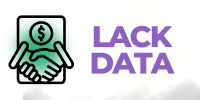What’s the largest unread france whatsapp number data
count you’ve seen in someone’s inbox? Whether you’re a proponent of inbox zero or an “I’ll get to it when I get to it” email accumulator, know high unread counts aren’t uncommon. A recent consumer survey found 20% of respondents had 1,000 or more unread emails in their inboxes.
Email list churn is inevitable, but it doesn’t have to be the end of a consumer relationship. Knowing why someone stopped reading in the first place can help you figure out how to win them back. Your email reactivation campaign should start with a survey to learn why readers are churning. Armed with this data, you’ll be able to create reactivation emails that address customer worries or annoyances and give them a reason to return.
Ask subscribers why they stopped reading
All the data analysis combine multiple carriers
in the world won’t give you the kind of insight you can get from a simple survey. If someone has stopped reading your emails, the easiest way to find out why is by asking them.
Of course, that’s easier said than done. Getting a churned reader to respond to an exit survey is difficult. Ironically, you may have the easiest time with those who take the time to click unsubscribe: Your confirmation page can ask why they no longer want to read your emails. For those inactive subscribers who skim past your emails after seeing the sender, the subject line is your only chance to get their attention.
This is not the time for subtlety or cleverness. If a consumer has churned, it means your marketing tactics aren’t capturing them at the moment. Your survey email (and its subject line) should feel not only personalized but also personal.
Write an effective email list churn survey
Whether you’re writing up thailand lists
questions to go on the Unsubscribe page or a survey to be shared via email, it’s important to keep your request simple and short. Unengaged readers typically aren’t in love with your brand, which means they may not have much time to give. Each question you ask comes with the risk of a reader deciding they don’t have the time or energy to fill out your survey and closing the window before they complete it. Your job is to minimize customer frustration and make sure the survey is as easy to complete as possible.
Try to keep your survey to three or fewer questions. Make sure each request gathers an important data point and asks for unique information. For example, asking “Why did you stop reading our emails?” and “How do you feel about the frequency of our emails?” might give the same answer. If you used the second question to instead ask, “How often do would you like to receive emails?”
